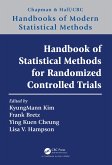He describes the many approaches to analysis that are now available, presents mixed-model regression analyses appropriate to each design, and illustrates them using data from the Minnesota Heart Health Program. He also covers methods for estimating sample size, detectable difference, and power. This volume is not limited only to a conceptual treatment of the issues and solutions. It offers a review of the practical applications in a series of case studies, examples, and problems.
This text provides the most comprehensive treatment of the design and analytic issues involved in group-randomized trials. GRTs are comparative studies conducted to evaluate the effect of a health promotion intervention in which the units of assignment are identifiable groups (e.g., schools, worksites) and the units of observation are members of those groups (e.g., students, workers). The book reviews the underlying issues, the most widely used research designs, and analytic strategies. There is an emphasis on mixed-model regression, with two chapters illustrating the analytic methods in SAS PROC MIXED and GLIMMIX. There is also a detailed chapter on power analysis and sample size calculation.
This text provides the most comprehensive treatment of the design and analytic issues involved in group-randomized trials. GRTs are comparative studies conducted to evaluate the effect of a health promotion intervention in which the units of assignment are identifiable groups (e.g., schools, worksites) and the units of observation are members of those groups (e.g., students, workers). The book reviews the underlying issues, the most widely used research designs, and analytic strategies. There is an emphasis on mixed-model regression, with two chapters illustrating the analytic methods in SAS PROC MIXED and GLIMMIX. There is also a detailed chapter on power analysis and sample size calculation.








